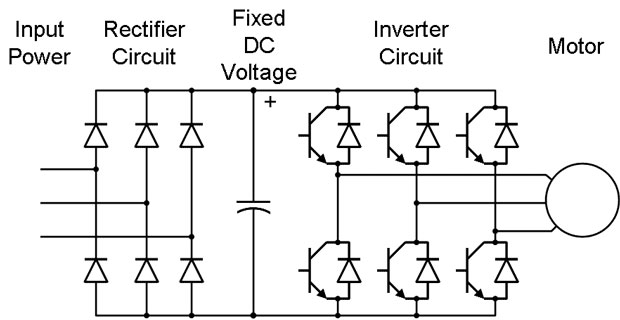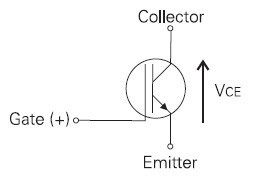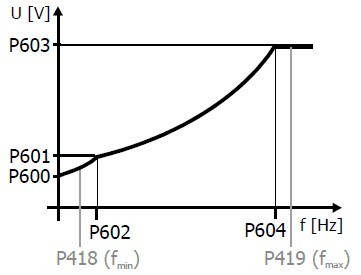VFD: Saving energy & money now!
If you can save them money through energy savings, building owners are interested in what you have to say. Just ask contractors, consulting and specifying engineers, as well as facility managers who have embraced the technology and benefits of variable frequency drives (VFDs).
"I believe in the product. It's a matter of showing and proving to customers that the product will save them money in energy costs," said Dominic Radosta of Capital City Mechanical, Norcross, Ga.
The contracting firm is experienced in show-and-tell. It had to prove to a major Southeastern governmental organization that updating its multiple HVAC installations with VFDs would provide an effective method of achieving energy savings and lowering maintenance costs. In this case, the governmental organization's own regulation required proof of the VFDs' ability to deliver meaningful energy savings before it could move forward.
"This is a customer who trusted us for many years. We do a lot of their maintenance, service, and repair work," said Radosta.
With help from outside sources, including Electronic Maintenance Associates of Norcross, Capital City Mechanical devised a testing program that would provide the evidence the county needed. The proposal centered on retrofitting a VFD to an existing air-handling unit in a county facility, and operating it in tandem with an identical unit using the existing constant-speed motor and mechanical inlet guide vane control system. The two units' energy use was systematically monitored and operational costs were compared.
"We did the project turnkey and brought in the energy consultant to verify the results," said Radosta.
Monitoring covered a 13-day period. At the end of the test period, data showed a reduction of nearly 72 percent in energy consumption on the floor where the VFD had been installed. Calculated at the average cost of electricity in the United States (6.93 cents per kilowatt-hour [kWh]), the VFD installation would provide annual savings of slightly more than $5,400 and a payback cycle of less than a year.
CALCULATING VALUE
To calculate the value of a variable frequency drive retrofit for a customer, contractors in-the-know state that one must first evaluate the customer's energy consumption and price. For example, suppose the chiller is a 1,300-ton system with air handler and pumps. If you broke down motor horsepower (hp) within a typical large facility with an applied HVAC system, the chillers represent 55 percent of the hp in the system, air handlers around one-half of that, and pumps and cooling towers represent the balance of the hp.
General modeling parameters include the number of operating hours, the cost of the electricity, the efficiency of the motor, and operating hours by percent total load. In this example, 5,600 annual operating hours is used and a 6 cents per kWh electricity cost. The 1,300-ton system derived the following benefit by changing from constant speed to variable speed:
OTHER ASSETS
A less obvious, but also important, benefit of VFD is that it will allow lower maintenance costs and longer life for the driven equipment. The driven equipment will not experience the shock of line starting, will not be short-cycled, and will not run at a speed higher than required to meet the comfort needs of the people in the conditioned space.
The VFD must be able to communicate with the building automation system to be used. This often requires a proprietary interface, or the more open LonWorks or BACnet communication.
There is no regularly scheduled maintenance for the variable frequency drive. Keeping its environment within the VFD manufacturers temperature and humidity recommendations and not exceeding the enclosure's rating for dirt and water protection are the only considerations. The VFD will reduce the need to inspect and replace VFD belts, and the slower, more constant rotational speed will increase the life of bearings and sheaves.
For most applications, the current VFD technology is just right.
Future changes in technology will only make the HVAC VFD more flexible, more communicative, more reliable, lower in cost, and yielding a better product with an even shorter payback.
BELIEVE AT USC
Craig Drown, associate director, energy management for the University of Southern California (USC) Facilities Management Dept., is a firm believer in variable frequency drives. To help ensure efficiency of its HVAC system, the campus has integrated VFDs into many projects and there are hundreds of VFDs running on campus today.
"Here at USC we constantly use different disciplines in energy-saving devices," said Drown. "We also apply energy management technology to improve the buildings' systems, reduce costs, and become more efficient, while providing a high level of environmental comfort."
Among the numerous recent projects are the Turner Logistics Storage, a new campus chilled-water thermal storage system, in addition to several retrofit and new construction projects.
"Because the need for efficiency is foremost on our minds, whether in new construction or remodeling, we apply VFDs," said Drown.
For maximum efficiency, the campus implements variable air volume (VAV) systems, in which airflow requirements are prescribed by demand on the system, signaled by thermostats, pressure, air quality sensors, or other monitoring devices.
Other technologies also ensure the best indoor conditions and efficiency. The Taper Hall building was converted in the retrofit to direct digital communication (DDC) and VFDs. The VFD is connected to the ac supply line and converts and controls the energy to supply the fan's motor, ensuring that the system is energy-efficient, offering motor protection from electrical surges.
It must also be noted that fans and pumps controlled with VFDs are up to 70 percent more efficient than those operated at a constant speed directly across the ac line. The VFDs also help keep the noise level of the system down, an important asset to USC.
The bottom line: It only makes sense for contractors to spread the value in variable frequency drives. It's a win-win situation for all parties.
"I believe in the product. It's a matter of showing and proving to customers that the product will save them money in energy costs," said Dominic Radosta of Capital City Mechanical, Norcross, Ga.
The contracting firm is experienced in show-and-tell. It had to prove to a major Southeastern governmental organization that updating its multiple HVAC installations with VFDs would provide an effective method of achieving energy savings and lowering maintenance costs. In this case, the governmental organization's own regulation required proof of the VFDs' ability to deliver meaningful energy savings before it could move forward.
"This is a customer who trusted us for many years. We do a lot of their maintenance, service, and repair work," said Radosta.
With help from outside sources, including Electronic Maintenance Associates of Norcross, Capital City Mechanical devised a testing program that would provide the evidence the county needed. The proposal centered on retrofitting a VFD to an existing air-handling unit in a county facility, and operating it in tandem with an identical unit using the existing constant-speed motor and mechanical inlet guide vane control system. The two units' energy use was systematically monitored and operational costs were compared.
"We did the project turnkey and brought in the energy consultant to verify the results," said Radosta.
Monitoring covered a 13-day period. At the end of the test period, data showed a reduction of nearly 72 percent in energy consumption on the floor where the VFD had been installed. Calculated at the average cost of electricity in the United States (6.93 cents per kilowatt-hour [kWh]), the VFD installation would provide annual savings of slightly more than $5,400 and a payback cycle of less than a year.
CALCULATING VALUE
To calculate the value of a variable frequency drive retrofit for a customer, contractors in-the-know state that one must first evaluate the customer's energy consumption and price. For example, suppose the chiller is a 1,300-ton system with air handler and pumps. If you broke down motor horsepower (hp) within a typical large facility with an applied HVAC system, the chillers represent 55 percent of the hp in the system, air handlers around one-half of that, and pumps and cooling towers represent the balance of the hp.
General modeling parameters include the number of operating hours, the cost of the electricity, the efficiency of the motor, and operating hours by percent total load. In this example, 5,600 annual operating hours is used and a 6 cents per kWh electricity cost. The 1,300-ton system derived the following benefit by changing from constant speed to variable speed:
- Annual energy cost, constant speed: $364,063.
- VFD operation: $197, 105
- Energy cost reduction/savings: $166,958
OTHER ASSETS
A less obvious, but also important, benefit of VFD is that it will allow lower maintenance costs and longer life for the driven equipment. The driven equipment will not experience the shock of line starting, will not be short-cycled, and will not run at a speed higher than required to meet the comfort needs of the people in the conditioned space.
The VFD must be able to communicate with the building automation system to be used. This often requires a proprietary interface, or the more open LonWorks or BACnet communication.
There is no regularly scheduled maintenance for the variable frequency drive. Keeping its environment within the VFD manufacturers temperature and humidity recommendations and not exceeding the enclosure's rating for dirt and water protection are the only considerations. The VFD will reduce the need to inspect and replace VFD belts, and the slower, more constant rotational speed will increase the life of bearings and sheaves.
For most applications, the current VFD technology is just right.
Future changes in technology will only make the HVAC VFD more flexible, more communicative, more reliable, lower in cost, and yielding a better product with an even shorter payback.
BELIEVE AT USC
Craig Drown, associate director, energy management for the University of Southern California (USC) Facilities Management Dept., is a firm believer in variable frequency drives. To help ensure efficiency of its HVAC system, the campus has integrated VFDs into many projects and there are hundreds of VFDs running on campus today.
"Here at USC we constantly use different disciplines in energy-saving devices," said Drown. "We also apply energy management technology to improve the buildings' systems, reduce costs, and become more efficient, while providing a high level of environmental comfort."
Among the numerous recent projects are the Turner Logistics Storage, a new campus chilled-water thermal storage system, in addition to several retrofit and new construction projects.
"Because the need for efficiency is foremost on our minds, whether in new construction or remodeling, we apply VFDs," said Drown.
For maximum efficiency, the campus implements variable air volume (VAV) systems, in which airflow requirements are prescribed by demand on the system, signaled by thermostats, pressure, air quality sensors, or other monitoring devices.
Other technologies also ensure the best indoor conditions and efficiency. The Taper Hall building was converted in the retrofit to direct digital communication (DDC) and VFDs. The VFD is connected to the ac supply line and converts and controls the energy to supply the fan's motor, ensuring that the system is energy-efficient, offering motor protection from electrical surges.
It must also be noted that fans and pumps controlled with VFDs are up to 70 percent more efficient than those operated at a constant speed directly across the ac line. The VFDs also help keep the noise level of the system down, an important asset to USC.
The bottom line: It only makes sense for contractors to spread the value in variable frequency drives. It's a win-win situation for all parties.
Post a Comment:
You may also like:
Featured Articles
What is VFD, How it works? - VFD ...
 VFD is shorted for Variable Frequency Drive (also known as AC Drives and Inverters) -- that's used to make an AC motor working in ...
VFD is shorted for Variable Frequency Drive (also known as AC Drives and Inverters) -- that's used to make an AC motor working in ...
 VFD is shorted for Variable Frequency Drive (also known as AC Drives and Inverters) -- that's used to make an AC motor working in ...
VFD is shorted for Variable Frequency Drive (also known as AC Drives and Inverters) -- that's used to make an AC motor working in ...VFD: Insulated Gate Bipolar Transistor ...
 IGBT (insulated gate bipolar transistor) provides a high switching speed necessary for PWM VFD operation. IGBTs are capable of ...
IGBT (insulated gate bipolar transistor) provides a high switching speed necessary for PWM VFD operation. IGBTs are capable of ...
 IGBT (insulated gate bipolar transistor) provides a high switching speed necessary for PWM VFD operation. IGBTs are capable of ...
IGBT (insulated gate bipolar transistor) provides a high switching speed necessary for PWM VFD operation. IGBTs are capable of ...Three phase inverters
 In the variable frequency drive rectifier paper, it explains how to go from three phase alternating current voltage to a direct ...
In the variable frequency drive rectifier paper, it explains how to go from three phase alternating current voltage to a direct ...
 In the variable frequency drive rectifier paper, it explains how to go from three phase alternating current voltage to a direct ...
In the variable frequency drive rectifier paper, it explains how to go from three phase alternating current voltage to a direct ...Variable Frequency Drive Harmonics and ...
A discussion of the benefits of variable frequency drives often leads to a question regarding electrical harmonic distortion ...
Variable frequency drive Energy saving
 Energy can be saved in a VFD by reducing the losses in the electric motor or by reducing the energy consumption of the variable ...
Energy can be saved in a VFD by reducing the losses in the electric motor or by reducing the energy consumption of the variable ...
 Energy can be saved in a VFD by reducing the losses in the electric motor or by reducing the energy consumption of the variable ...
Energy can be saved in a VFD by reducing the losses in the electric motor or by reducing the energy consumption of the variable ...
VFD manufacturers
